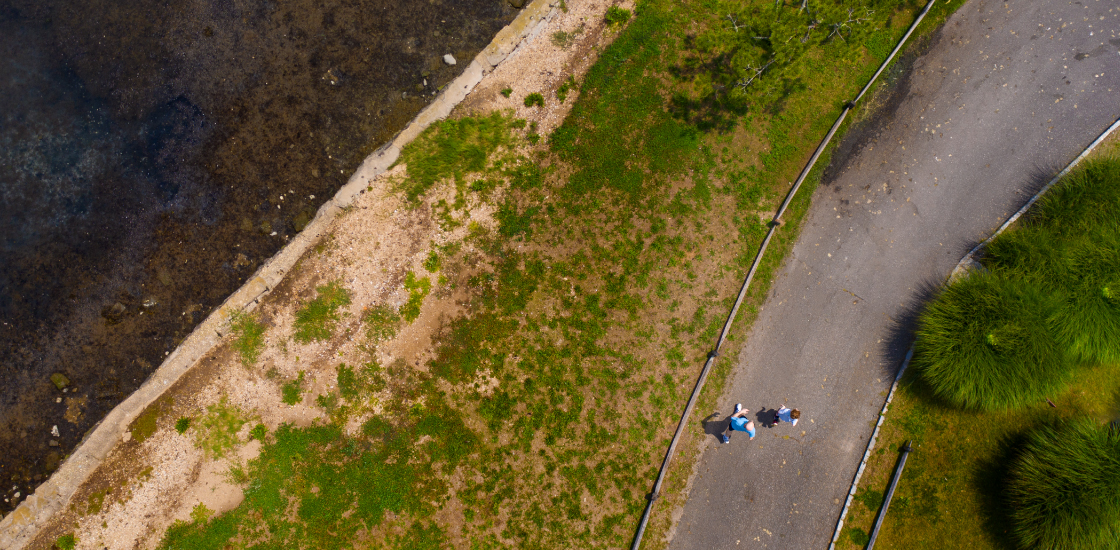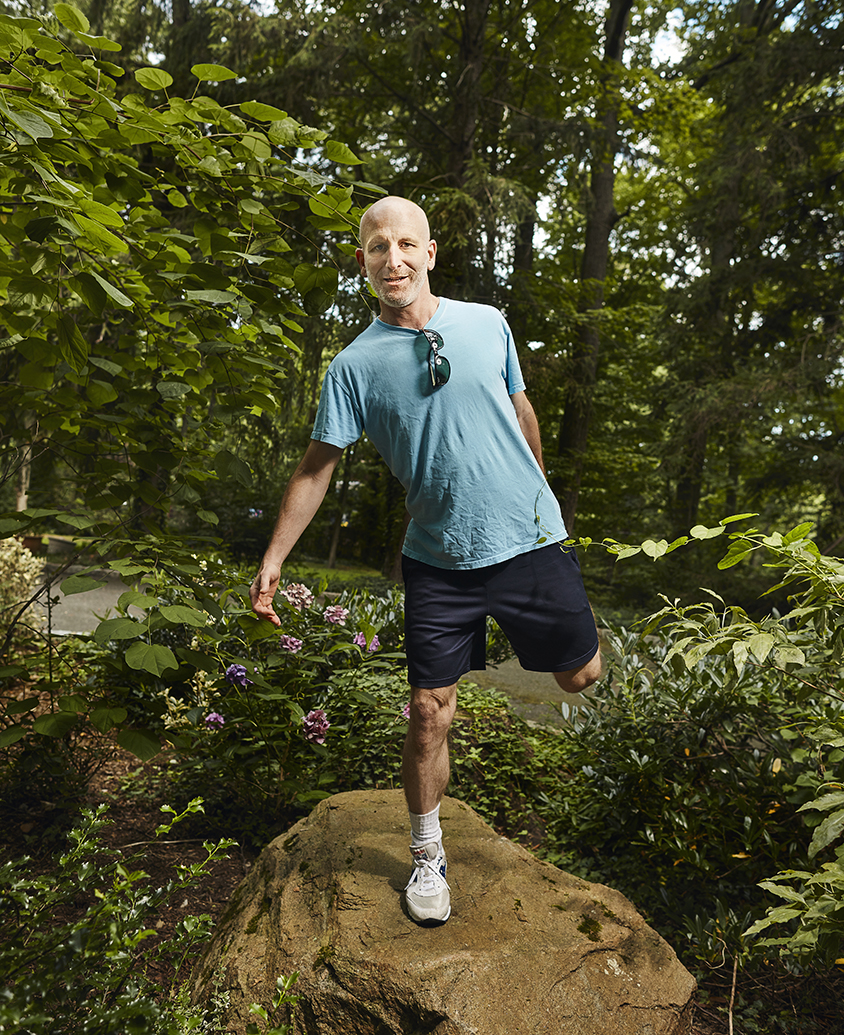Beyond the bench: A conversation with Tony Zador
Neuroscientist Tony Zador discusses the enigma of the human brain, the ‘aha’ moments of running and why a ski resort is a good place for a scientific conference.

When Tony Zador is thinking about the brain, he’s often exercising his body. A professor of neurosciences at Cold Spring Harbor Laboratory in New York, Zador has run five miles a day, seven days a week since he was 18. “That’s when the ideas sort of click into place,” he says.
His bagel-fueled afternoon jaunts have continued unabated during the coronavirus pandemic, helping to drive forward his research on how the brain’s disparate parts give rise to the complexity of human behavior and experience. Zador’s lab created a brain-mapping technique known as BARseq — an update to the earlier MAPseq — that can trace connections and gene expression in individual neurons. The tool may help researchers understand how brains are connected differently in autistic people.
Spectrum spoke to Zador about the enigma of the human brain, the ‘aha’ moments of running and why a ski resort is a good place for a scientific conference.
Spectrum: What question drives your research?
Tony Zador: Ultimately, it’s: How do you go from three pounds of brain to thought? We know an awful lot about the parts that make up brains — the neurons, the synapses, the molecules — and in spite of all that, we don’t know how to put the pieces together to form a simple, coherent model of how that gives rise to thought and emotions and actions and memories. It’s really frustrating, because it’s like you’ve got a bunch of Tinkertoys and you know that you have all the right pieces, and you don’t know how to put them together quite right.
There’s a great cartoon of a bunch of Scrabble tiles, and the caption is something like, “I just bought a book from Ikea.” That’s kind of how I feel. We understand so much about the pieces, and yet we don’t know how to put them together in quite the right way.
S: Is there a person you’d like to work with whom you haven’t worked with yet?
TZ: I’m really lucky that I have super smart people in my lab, but I also collaborate all the time with all sorts of people who later become friends or who were already friends. Just now I’m really excited because I’m just starting a grant with Ed Boyden. We’ve been friends for years and talking about doing something together, and so now it looks like we can maybe do something that brings our technologies together and will allow us to do things that we wouldn’t otherwise be able to do.
S: What does your daily routine look like?
TZ: My days aren’t that different now during COVID-19, except that the meetings, instead of being face to face in my office, are over Zoom. I have kids, so my daily routine used to start with being woken up earlier than I would like, to get my kids off to school, but now I get to sleep in a bit more. Usually I try to put off my meetings so I don’t have them first thing, and I answer emails or maybe even think a little, but that’s rare. Mostly I don’t have time for that.
I occasionally have some time to work on reviewing papers, writing papers, writing grants, all those things. I don’t have great study habits, so I’m not very efficient, and an awful lot of my time when I’m supposed to be doing something in particular is spent procrastinating and not doing it. Sometimes I go down scientific rabbit holes, and in some sense that’s inefficient but probably good in the long run, because those are when I get excited about new ideas.
I run pretty much every day. I use that time to relax but also often to think through scientific things. Especially if I’m doing something math-related, which is a lot of what I do, that’s when those ideas sort of click into place. If I’m stuck on something I go for a run, and when I get back I at least have an idea of what I should do next.

S: When and where are you most productive?
TZ: It depends. There are different stages of any project. For me, the creative time is at night — I’m a night owl. I get so little sleep because I wait until everyone is asleep, including the kids, and then I work until 2 or 3 a.m. That’s when I get most excited about tracking down ideas. That’s not necessarily when I’m most productive in terms of writing sentences for a paper or something. That is more like a couple of hours after I’ve woken up. But that assumes that I’m productive, which I’m really not these days.
Different people have different styles. I’ve basically come to realize the trick is to embrace what you might think are your weaknesses as your strengths and find collaborators who complement your weaknesses. My strength is that I get excited early on in a project when the project is just being conceived. I love the excitement of doing something new. Once I come remotely close to mastering anything, I kind of start losing interest in it.
S: Do you have a favorite conference?
TZ: I’ve actually started a bunch of conferences, so they’re among my favorites. When I was a postdoctoral researcher I started a conference called NIC, which was Neural Information and Coding. It was a small, invitation-only conference that was always at a ski resort. We would have meetings in the morning, then ski throughout the day, and then meet again in the evening. That eventually grew into a much larger conference called Cosyne — Computational and Systems Neuroscience — which has ballooned up to almost 1,000 people.
The most fun meetings are the smallest meetings. It’s exactly the meeting I wish had been around when I was a graduate student or a postdoc.
I just started a new meeting for neuroscience and artificial intelligence, NAISys. It was going to be held at the end of March, and it was postponed until mid-November. It will bring together people interested in what real brains can tell us about how to build better artificial neural networks.
S: What are you reading right now?
TZ: You mean other than countless papers on immunology because of COVID? I’m reading several books. One is called “Other Minds,” by Peter Godfrey-Smith. It’s all about how smart octopuses are, and how they’re like this weird alien intelligence. Even though I’m a neuroscientist, I knew almost nothing about octopuses. They’re really smart, and the way their nervous system is organized is really different. Related to that, I just finished a book called, “Are We Smart Enough to Know How Smart Animals Are?” by Frans de Waal. It’s just spectacular.
I was an M.D.-Ph.D., and even though I didn’t go on to do a residency, the book all medical students had to read was a novel by a guy named Samuel Shem called “The House of God.” It captured deep truths about what it’s like to be a medical intern. It’s basically a somewhat fictionalized year in the life of a medical intern at MGH, which stood for Man’s Greatest Hospital. Fairly recently, he came out with a sequel called “Man’s Fourth Best Hospital,” and I just started reading that, so I’m excited.
S: What do you eat or drink while you’re working?
TZ: I drink endless cups of coffee, and because I can’t run on a full stomach, and it takes a very long time after eating for me to not have a full stomach, I basically eat bagels until I go for a run. So the answer is coffee and bagels.
Recommended reading

New organoid atlas unveils four neurodevelopmental signatures
Explore more from The Transmitter

The Transmitter’s most-read neuroscience book excerpts of 2025

Neuroscience’s leaders, legacies and rising stars of 2025


